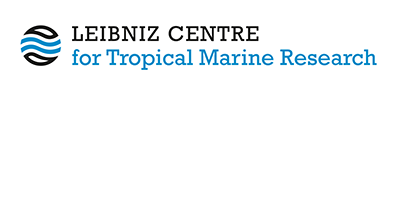18.5.17 | Many stony corals live in close partnership with different species of damselfish. Reef ecologists from the Leibniz Centre for Tropical Marine Research (ZMT) in Bremen (Germany) have now taken a closer look at this symbiosis and discovered a previously unknown advantage for the corals. The fish support the corals in their photosynthesis, which is important for coral growth. The study has just been published in the Journal of Experimental Biology and was also featured in Nature Magazine’s research highlights.
Coral reefs are highly complex communities with multifaceted interrelations and dependencies, many of which are not yet thoroughly studied. The mutually beneficial symbiosis between clownfish and anemones is well known: the fish provide nutrients to their host while at the same time finding a place to hide from predators inside the anemone.
The same advantages are attributed to the symbiosis between damselfish and stony corals. It is strikingly noticeable, however, how tirelessly the damselfish flick their fins when they are hiding among the coral branches. They display this behaviour not just during the day, but also whilst sleeping at night.
Ecologist Nur Garcia-Herrera and her colleagues from the ZMT have studied this symbiosis in more details. In the Red Sea near Eilat (Israel) they observed the damselfish, Dascyllus marginatus, which frequently resides inside colonies of the branching Stylophora pistillata coral. “More than 30% of the fish’s time is spent among the coral branches”, explains Garcia-Herrera. “Often a dozen damselfish or more are gathering like a cloud above the football-sized coral.”
In the lab the scientists brought fish and corals together in a respiration chamber to measure respiration and photosynthesis rates. Garcia obtained some unexpected results: Even a single damselfish intermittently visiting the coral increased the photosysnthesis rate of Stylophora by up to 6% a day. Corals that live in symbiosis with damselfish can thus potentially grow considerably faster.
Tiny algae living inside the tissue of stony corals are responsible for the photosynthesis. Their products such as high-energy sugars are beneficial for the corals, allowing them to build the large calcium carbonate structures typical for tropical reefs. During the night corals take up oxygen, in the daytime they emit it during photosynthesis. If an excess of oxygen accumulates, a particular enzyme essential for photosynthesis is inhibited in its activity.
“By flicking its fins the damselfish improve the water circulation as well as the supply and removal of oxygen, which is extremely important in areas of low flow such as lagoons enclosed by reefs,” says Dr. Sebastian Ferse, a reef ecologist who headed the study at the ZMT.
The symbiosis could also have a positive effect during coral bleaching. Stressful conditions such as increased water temperatures can lead to the production of oxygen radicals by the coral, which foster bleaching. The fin flicking can aid in the removal of such radicals.
“However, increased overfishing could spell doom for the symbiosis”, cautions Ferse. “If damselfish predators, i.e. bigger fish, are increasingly caught, the damselfish do not need to hide among the corals any longer."
"The symbiotic damselfish are also popular ornamental fish and are caught for the marine aquarium trade. In the Thousand Islands archipelago near Jakarta several species have already disappeared,” says Ferse.
Publication:
Mutualistic damselfish induce higher photosynthetic rates in their host coral, Nur Garcia-Herrera, Sebastian C. A. Ferse, Andreas Kunzmann, Amatzia Genin, Journal of Experimental Biology 2017 220: 1803-1811; doi: 10.1242/jeb.152462
"Research Highlight" in Nature:
Fish boost Coral Photosynthesis





